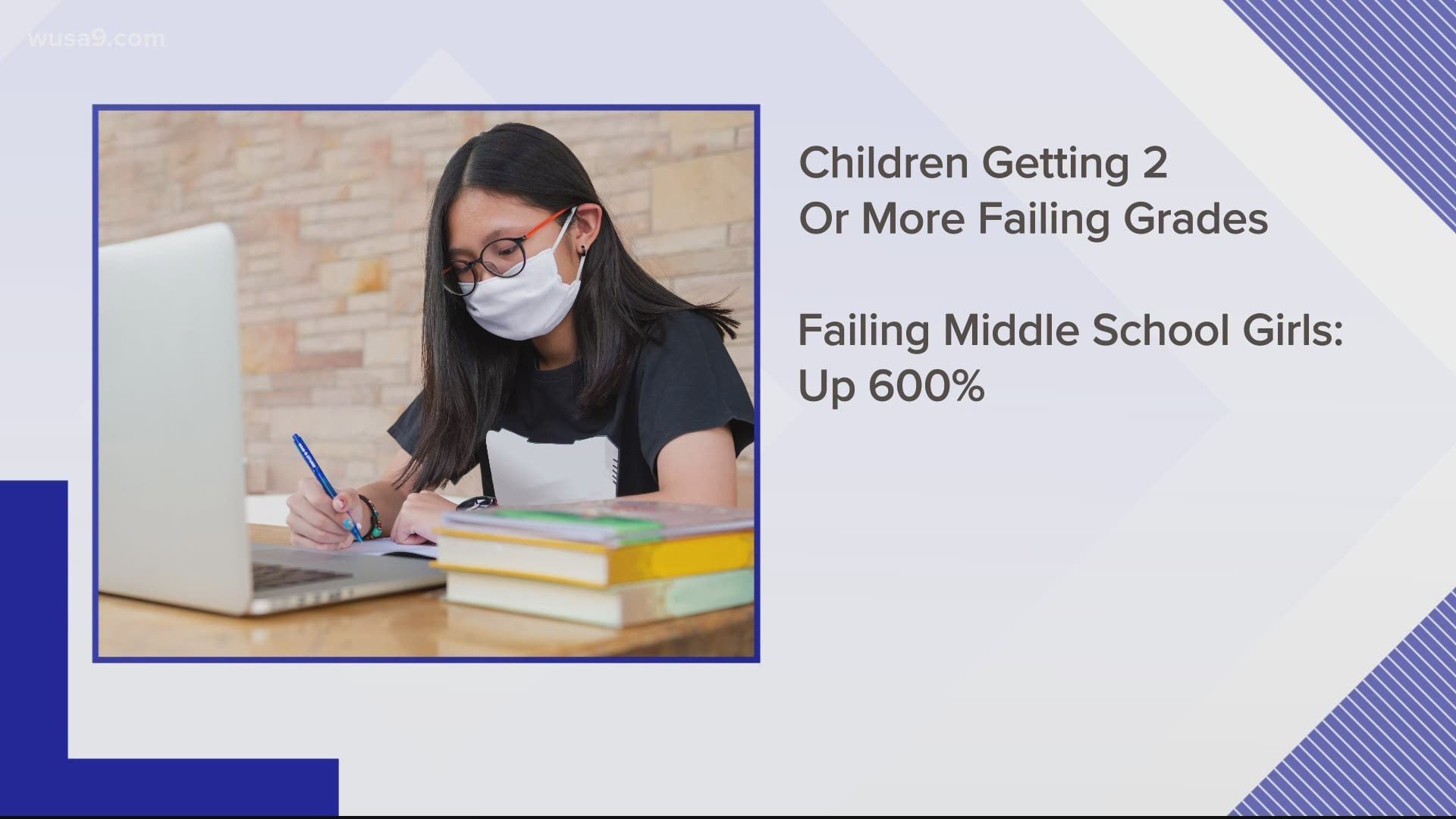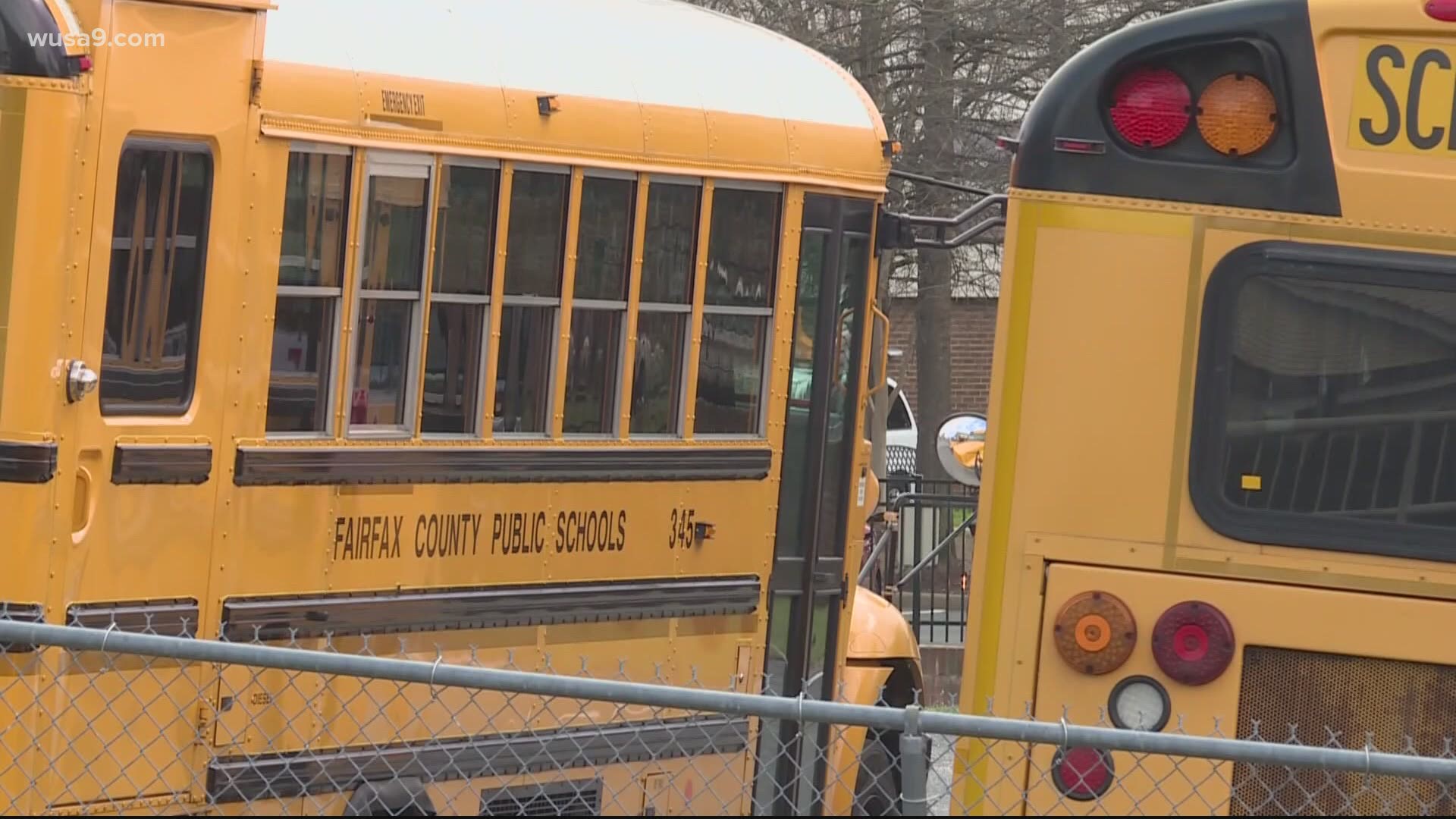FAIRFAX COUNTY, Va. — A new internal analysis from Fairfax County Schools found an alarming increase in the number of students left behind by the switch to online learning.
The percentage of middle and high school students getting F grades in two or more classes has jumped a stunning 83%, according to the "Study of Teaching and Learning During the COVID 19 Pandemic."
Students with disabilities are struggling even more. They've seen a 111% increase in children getting two or more F grades.
Middle school students seem to be having more trouble with distance learning than high school students. The report found a 300 percent increase in middle schoolers getting two or more Fs, from a total of 2% of students in the first quarter of last year, to 8% of them in the first quarter of this year.
The study was released by the school district under a Freedom of Information Act Request by Eileen Chollet, a mom who has been pushing hard to get her daughter back to in-person learning.
April West, mother of Chloe, 12, said her daughter's grades have fallen mostly because of problems with the technology and communication, not the quality of the teaching. She said her daughter has no way of telling her teacher in real time that she can't hear what the teacher is saying.
Hispanic middle school students, according to the report, saw a 400% increase in Fs, English learners saw a 383% increase, and economically-disadvantaged middle schoolers saw a 375% increase in Fs.
Among both middle and high school students together, the groups that saw the lowest increase in Fs were Black children (63% increase) and White students (67% increase).
The report parsed the data five different ways, and under some of the analyses, the fallout was less alarming.
Overall, according to a summary: "Results indicate a widening gap between students who were previously performing satisfactorily and those performing unsatisfactorily. In other words, students who performed well previously primarily performed slightly better than expected during Q1 of this year. In contrast, students who were previously not performing well, performed considerably less well. A greater proportion of low-performing students received failing grades during Q1 than would have been expected based on patterns of marks in prior years."


